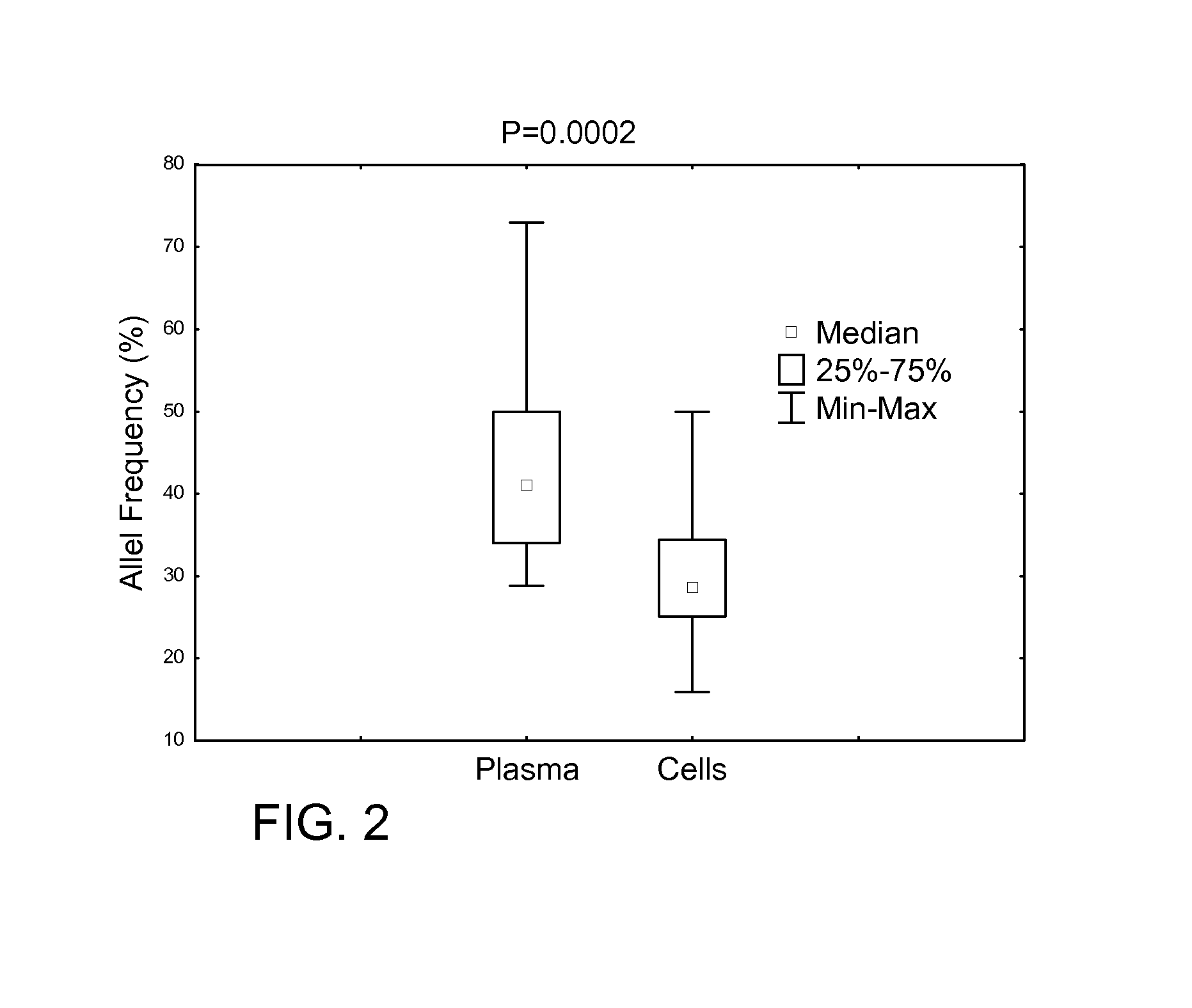Determining tumor load and biallelic mutation in patients with calr mutation using peripheral blood plasma
a technology of peripheral blood plasma and tumor load, which is applied in the field of diagnosis, monitoring and managing myeloproliferative neoplasms, can solve the problems of confusion and difficulty in determining tumor load, unable to achieve acceptable sensitivity detection using conventional sequencing techniques, and inability to analyze tumor samples effectively
- Summary
- Abstract
- Description
- Claims
- Application Information
AI Technical Summary
Benefits of technology
Problems solved by technology
Method used
Image
Examples
example 1
[0044]Plasma was isolated from peripheral blood samples collected in EDTA anticoagulant by centrifugation at 1000×g for 10-15 min. Total nucleic acid was isolated from plasma using NucliSens extraction kit (bioMerieux Inc., Durham, N.C.) according to the manufacturer's instructions.
example 2
Fragment Length Analysis
[0045]PCR / fragment reaction covering CALR gene mutation hot spot exon 9 was performed using a 6-Fam labeled primer. The CALR exon 9 mutated or normal control were verified by determining the size of PCR products using ABI Genetic Analyzer. Normal control specimens displayed a 260 bp peak, while those with mutated CALR (with insertion / deletion) displayed various size peaks in addition to the CALR 260 bp normal control peak. The intensity of the mutant and wild-type peaks can be used to calculate the mutant rate (semi-quantitation).
[0046]Tables 1 and 2 below provide reagents and primer sequences, respectively, used in this procedure.
TABLE 1Laboratory ReagentsReagentVendorCatalog No.QIAmp DNA Blood Mini KitQiagen 52302NucliSens Magnetic Extraction Reagent Biomerieux200293 / 48FastStart Taq DNA Polymerase (500rxns)Roche2032937GeneScan 600 LIZ size standard v2.0Applied 4408399(800rxn)BiosystemsNuclease Free WaterFischer BP2484-100 Scientificor equivalentEthanol Abso...
PUM
| Property | Measurement | Unit |
|---|---|---|
| Fraction | aaaaa | aaaaa |
| Length | aaaaa | aaaaa |
| Size | aaaaa | aaaaa |
Abstract
Description
Claims
Application Information
 Login to View More
Login to View More - R&D
- Intellectual Property
- Life Sciences
- Materials
- Tech Scout
- Unparalleled Data Quality
- Higher Quality Content
- 60% Fewer Hallucinations
Browse by: Latest US Patents, China's latest patents, Technical Efficacy Thesaurus, Application Domain, Technology Topic, Popular Technical Reports.
© 2025 PatSnap. All rights reserved.Legal|Privacy policy|Modern Slavery Act Transparency Statement|Sitemap|About US| Contact US: help@patsnap.com


